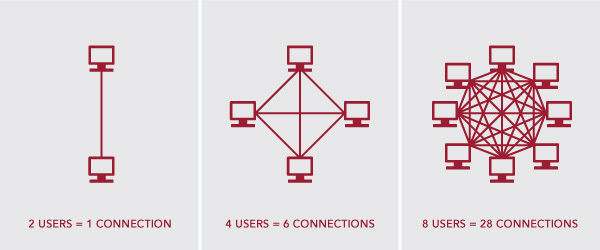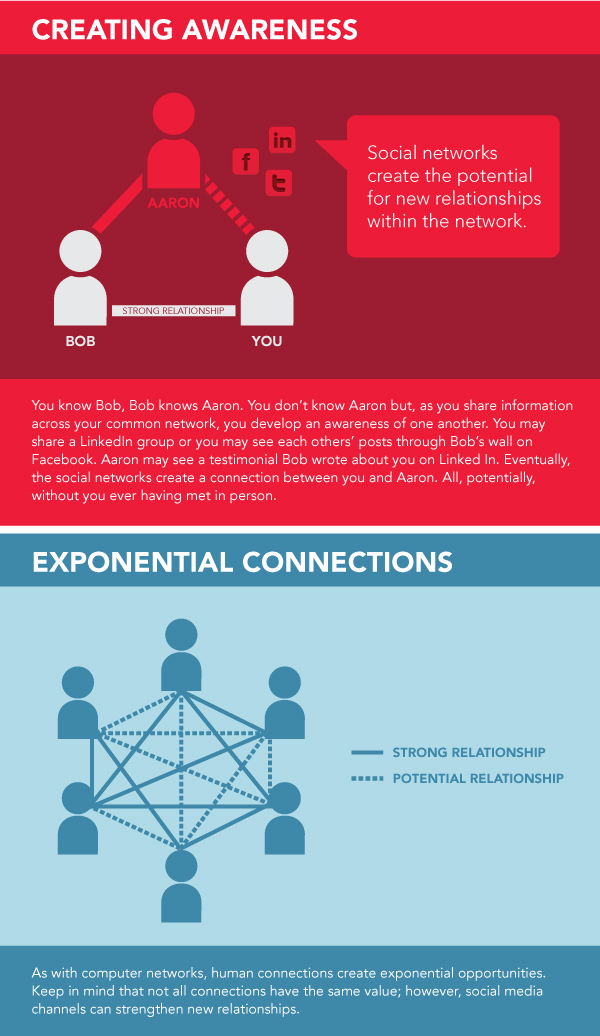
The Spark: Stop overcomplicating employee engagement
At Solid Form, the spark started as a question around employee engagement, kindling a flame under a team that craved more robust and creative projects.
At the risk of exposing my inner-nerd, I’m going to use today’s post to discuss exactly why you should care about a law of telecommunications (or more accurately, a law of networks).
No, I’m not talking about the FCC, airwaves, or the rules that govern AT&T and Verizon. What I’m referring to is a very specific kind of law – Metcalfe’s Law – which governs how networks can grow exponentially.
Let’s keep this simple, since I’m guessing neither of us is a quantitative analyst. In a nutshell, Metcalfe’s Law works something like this: as the number of users connected to a network system grows, the value of that system begins to increase at a square of the number of users. In other words, if I have a network of ten users and add one new person, my network doesn’t increase by 10%, but rather something closer to 20%.
This may sound overly technical; fortunately, a simple illustration demonstrates the compounding power of added network users:

As you can see, when a network adds a new user, it does much more than increase the size of the network. What makes the network so powerful (and hence, valuable) is that the new user (or node) creates new connections that amplify the overall network’s communication potential.
The graphic above, while representing hardware and physical networks, can also be applied to social media networks like Facebook, Linkedin, and Twitter. Here’s a simple infographic illustrating why a social network grows in value through adding members:

For years, successful business owners leveraged the power of networks to grow their word of mouth and referral business. Hands down, this is the #1 way older entrepreneurs built their practices. At Kinesis, we often joke about “golf-course marketing,” – Rotary clubs, charities, and country clubs were all easy ways for owners to expand their reach. Since the number of networking opportunities were relatively finite, a single owner could create a powerful network simply by attending a few select organizations. This strategy works well in small towns, but requires extensive work in urban settings and communities with diverse networks. Most service firms employ legions of principals and partners for the sole purpose of network saturation (hint: this is an expensive marketing strategy).
Most business owners understand the value of their personal networks, civic organizations, and professional groups. We’re beginning to see a greater number of owners starting to leverage the power of social media networks; some are successfully combining online and offline communities.
One of the things I’m really excited about are the opportunities to leverage Metcalfe’s Law in our business. By working with a very specific type of client (and saying “no” to businesses that don’t fit our model) we’ve begun to build a network of owners with similar challenges and aspirations. If one client struggles with their sales process, for example, we can leverage the experience and knowledge of all of the owners in our Kinesis mini-network. Similarly, if we build a unique solution for one client, it’s likely that idea will pay dividends to other “users” in our group. This system, part of our core value “Share the Good,” illustrates how much more powerful the network can become when connections have a high degree of relevance.
For business owners, Metcalfe’s Law is a simple framework that can be extended well beyond the realm of computers networks. Once you've built out personal and professional networks, ask yourself what other groups can be created to generate real business power. Employees, other business owners, and even clients can be leveraged to powerful ends.
Get insights like this straight to your inbox.